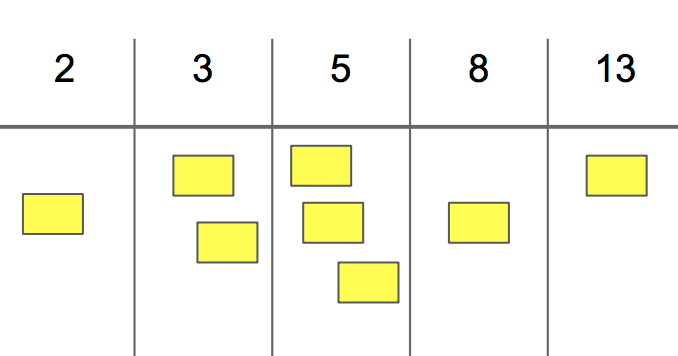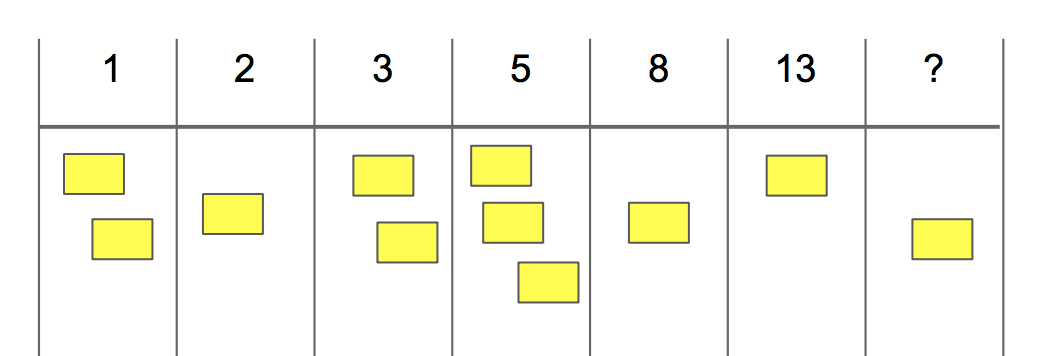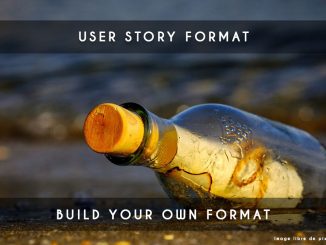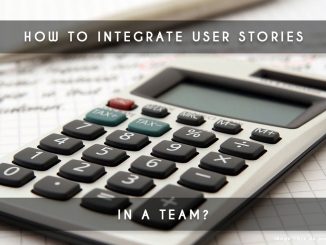
In agile methods, there are different methods to estimate the story points of user-stories including Extreme Quotation that is fast and efficient. It is quite different to Poker Planning which is the most popular now.
To prioritize or even to prepare the next sprints, the product owner needs the estimate of the developers because he will be able to see his choices change according to the estimate of these; with poker planning, it can take hours especially when you multiply user-stories. Extreme Quotation is a much faster concept to estimate massively user-stories.
Article on poker planning for those who don’t know this very popular method in Scrum: see the article.
In the form of a workshop
There are different ways to do it and don’t hesitate to adapt the method to your environment.
You can estimate in two forms: size of t-shirt (S, M, L, XL, XXL) or with the continuation of Fibonacci (1, 2, 3, 5, 8, 13 …) more known by the Scrum teams. In agile, it is quite rare (and very disadvised) to estimate in time.
To prepare the workshop, the agile coach must prepare post’it of each user-story and a chart on the wall with the different possible notations.
Here is an example of what we will have during the workshop visually:

Workflow of the Extreme Quotation
When everything is ready, we gather the whole team 30 to 40 minutes around this board; the post’it are not arranged on the board but close to it.
Step 1 of Extreme Quotation – 10 minutes
The agile coach will briefly remind the goal of this workshop before starting it concretely so that the whole team understands the interest of this one.
Then the product owner will read all the user-stories one by one to all participants. Unlike poker planning, we will not do a question / answer session on them.
Step 2 of Extreme Quotation – 10 minutes
The participants will put a post’it in the column that seems to him to be the good estimate without discussing. On this first round of estimation, participants should not speak and do the exercise in silence.
Then, we will put the estimate in small on all the post’it positioned on the board.
Step 3 of Extreme Quotation – 10 minutes
Each participant can move a post’it under another value (always in silence) if he doesn’t agree with the basic estimate.
If a post’it has changed position, we will note on it the new estimate; for the post’it that have not changed, we will take them out of the board (on the side for example).
Step 4 of Extreme Quotation – 10 minutes
Participants will discuss together the user-stories that have changed their value between step 2 and step 3 so that everyone agrees on the final value we will give them.
We must not exceed the 10 minutes announced and make a big effort to reach an agreement quickly.
Reminder of the estimation in the Agile world
The world of agility is not very fan of the estimate because it is true that in computing the estimations (as much as in other methodologies of work) are only rarely reliable because many unknowns on the projects bring high uncertainty.
Some agilists like me, even suggest #NoEstimate especially if you don’t really use the estimate in your projects.
While this methodology seems less precise than poker planning, it also allows you to take less time to estimate; the team will take advantage of this time to advance on the product. In fact, we realize that this method gives results as reliable as poker planning.
Conclusion Extreme Quotation
You have just learned how to make massive estimates with Extreme Quotation. Many agile coaches who do it are very satisfied with the results of this method.
Feel free to try it and adopt it if the results are up to your expectations.




1 Trackback / Pingback